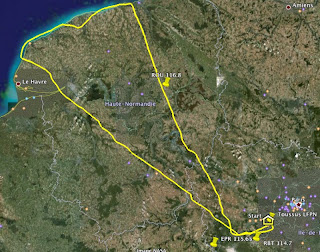Each year in September an incredible aviation event takes place, the Reno National Championship Air Races. For one week, races are launched one after another over Reno Stead Airfield in Nevada and spectacular shows are presented between two runs.
 These races are an opportunity for admiring outstanding aircrafts running around poles at impressive speeds. Figures may be surprising during this championship: some planes have piston engine rated over 4'000 horse power and reach average speeds over 470 mph during races, approximately 200 feet above ground.
These races are an opportunity for admiring outstanding aircrafts running around poles at impressive speeds. Figures may be surprising during this championship: some planes have piston engine rated over 4'000 horse power and reach average speeds over 470 mph during races, approximately 200 feet above ground.The aeroplane shown on the picture is the Grumman F7F TigerCat nicknamed "Big Bossman", it is flown by Mike Brown.
Attracted by the million dollar prize, pilots take huge risks. During my three days stay during 2007 edition, two pilots lost their lives during races. Although occurring in conditions that are really far from the daily pilots reality, these accidents remind us that an aircraft is very fragile and that an error performed close to ground at high speed is most likely fatal, even with a lot of experience.
But the show must go on! The Races are extraordinary, so far from what can be seen in France...













